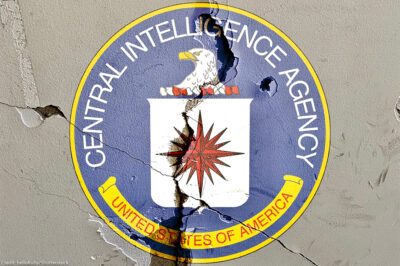If you’re like me, you measure the passage of time by your annual celebration of Constitution Day. Personally, I look forward all year to decorating the Tree of Liberty and lighting the Nation of Laws, Not Menorah.

Still, it’s hard not to look upon this year’s Constitution Day — our last under the presidency of George W. Bush — and not get a little wistful. As some popular musicians once said, “What a long, strange trip it’s been.” For those of us who care about the Constitution, that pretty well sums up the last eight years. The trip has certainly been long.
With each passing year we’ve seen a greater proliferation of technology designed to invade our privacy — from so-called “smart” ID cards enhanced with radio frequency chips to networked CCTV cameras with facial and license-plate recognition software, to DNA databanks and beyond. We’ve also seen the enactment, sometimes overtly but often in secret, of new government surveillance programs and policies, which in turn create a market for more privacy-invasive technology.
This combined trend is nothing new. The first major articulation of the right to privacy in American legal thinking, an 1890 article in the Harvard Law Review by Louis Brandeis and Samuel Warren, was in part a response to the increasing ubiquity of a relatively recent technological innovation at the time — still photography. The authors warned of what they saw as the vanishing freedom to live “screened from public observation.”
Brandeis, of course, went on to the U.S. Supreme Court and his belief in a fundamental right to privacy made its way into our constitutional vernacular. (Samuel Warren, who graduated from Harvard Law School second in his class — behind Brandeis — went on to a career as a prominent Boston attorney, but did not achieve the renown and lasting influence of his coauthor. Which provides a good lesson for pursuing a legal career: make sure none of your peers is Louis Brandeis.)
Progress, of course, tends to be much slower than its opposite. It is important to remember that Justice Brandeis’s main treatise on privacy did not actually establish it as a right — it was part of a dissent in the 1928 case of Olmstead v. United States. Brandeis’s view was not adopted by a majority of the Court until 1967 in Katz v. United States. Both of these cases were about whether the Fourth Amendment covered warrantless wiretapping of telephones. Some seem to think we still haven’t settled this issue, even 80 years after Olmstead.
Indeed, as you can read in any of today’s posts , many of the fundamental rights that took decades to achieve have been greatly diminished, if not eviscerated in just the last eight years. In the case of privacy, we are reaching a true precipice — a veritable doomsday moment that threatens to change us irrevocably from a free society to a total surveillance state.
But there is hope on this Constitution Day — the last, I repeat, of the Bush Administration. Americans are beginning to recognize the impending darkness of a surveillance society, and in a few cases are refusing to go gentle into that good night. We have seen this in the state rebellion against Real ID, the Bush Administration’s nightmare national ID scheme, in the outrage over the millionth name added to the Terrorist Watch List, and in a recent legal victory by the ACLU of Massachusetts to force the state police to return DNA samples it collected from innocent people in a 2002 dragnet.
These stories are just the tip of the spear, of course, and we have a long way to go from five minutes to midnight to the full protection of what Justice Brandeis called “the most comprehensive of rights.” The next President will have an unprecedented, and perhaps unrepeatable, opportunity to determine whether we step back from the precipice, or go over it. It is up to us, as Constitution Voters, to pull them in the right direction.


